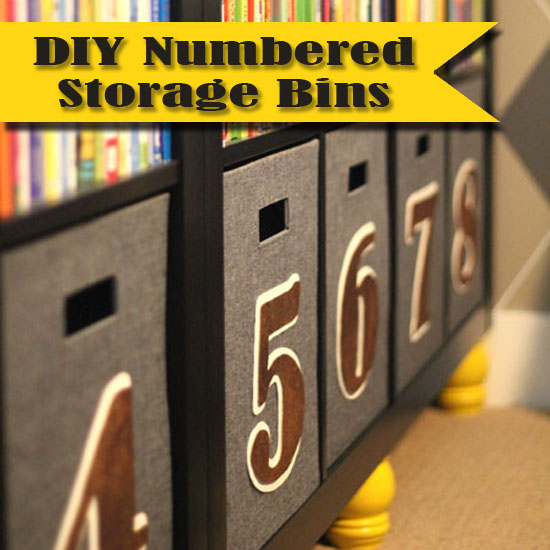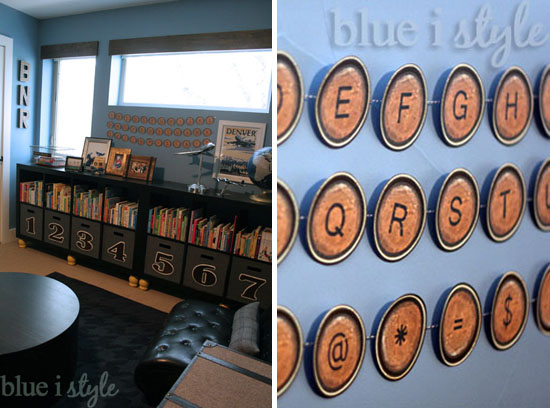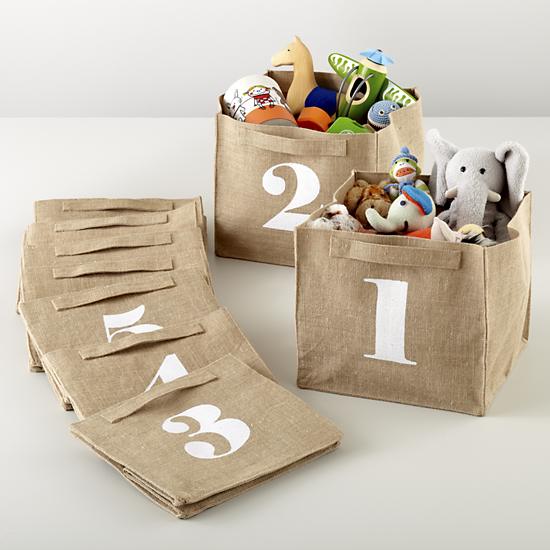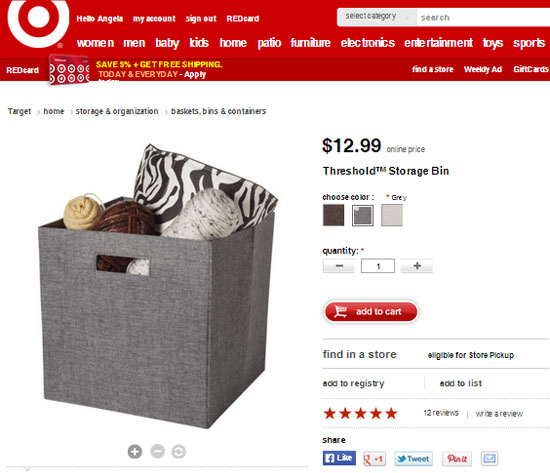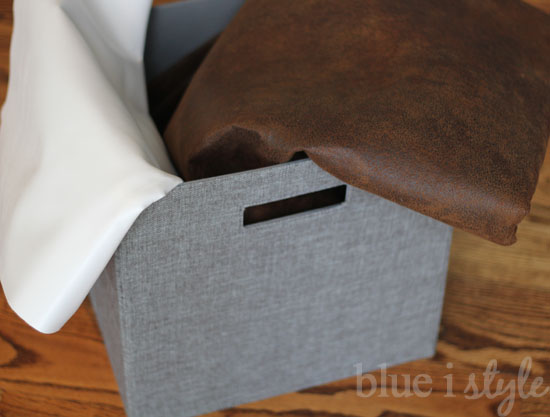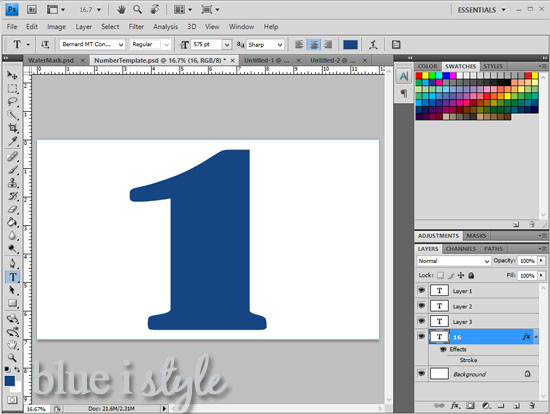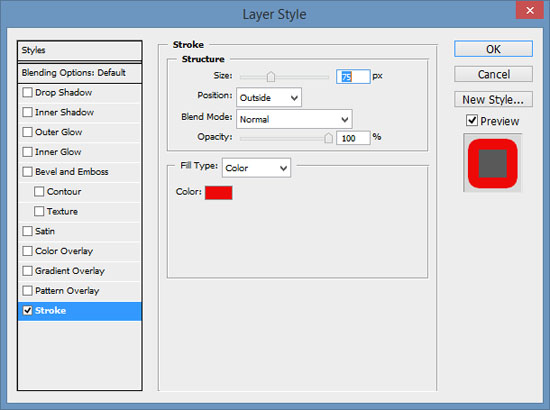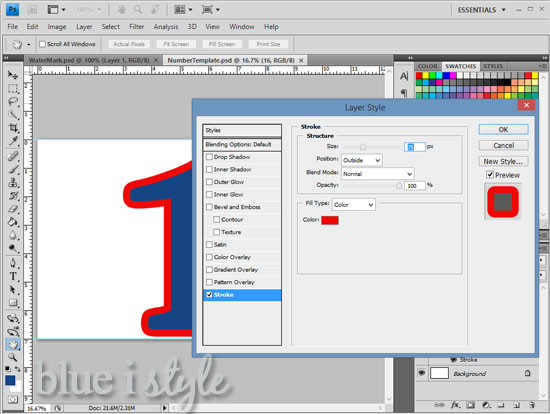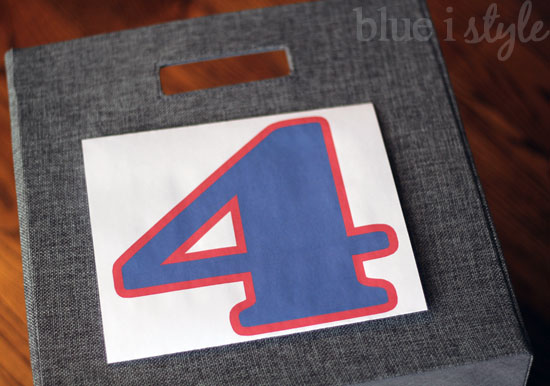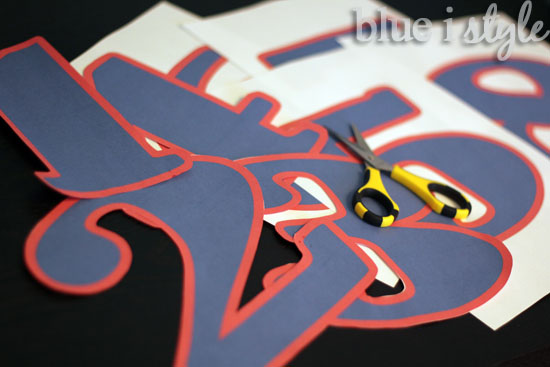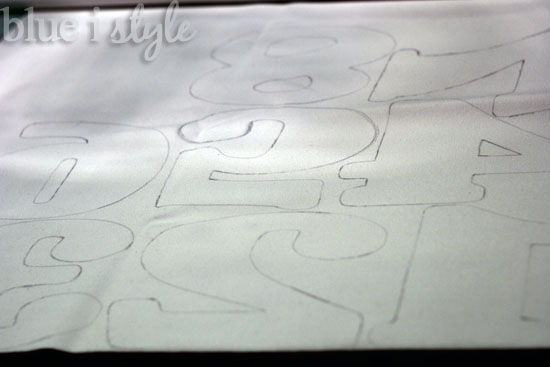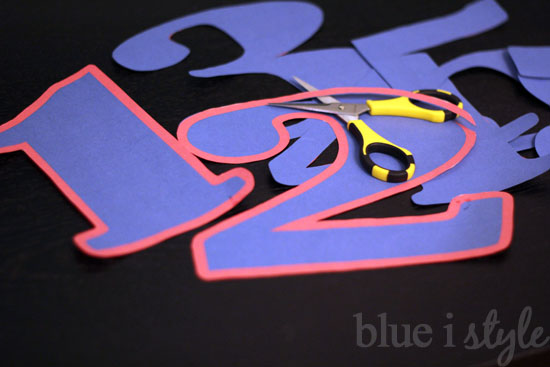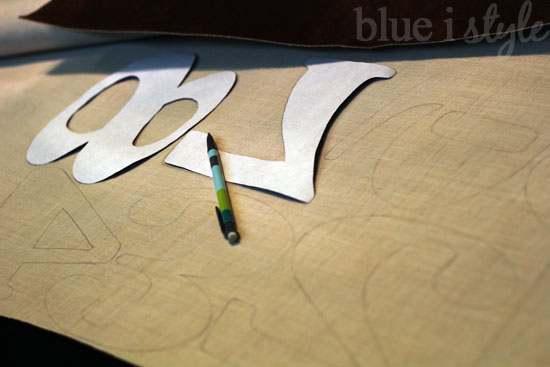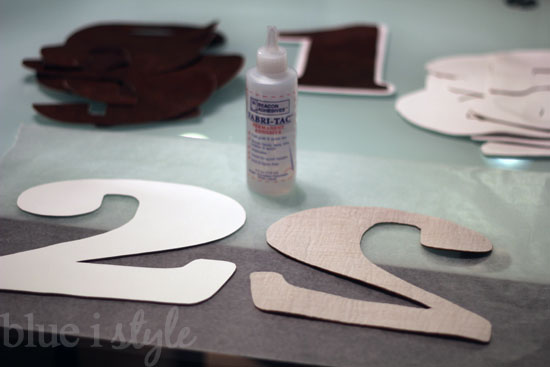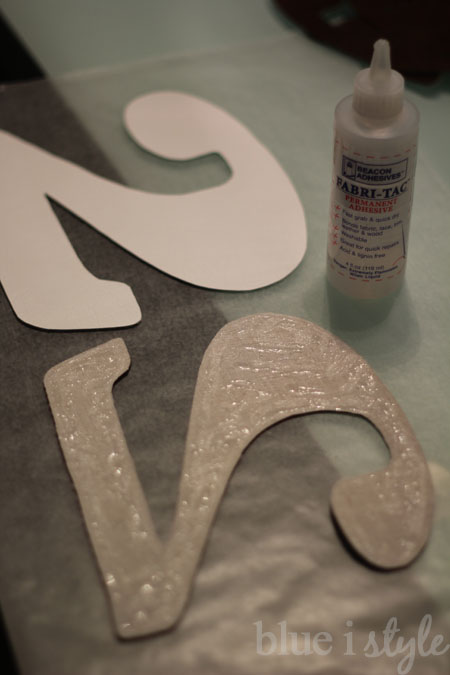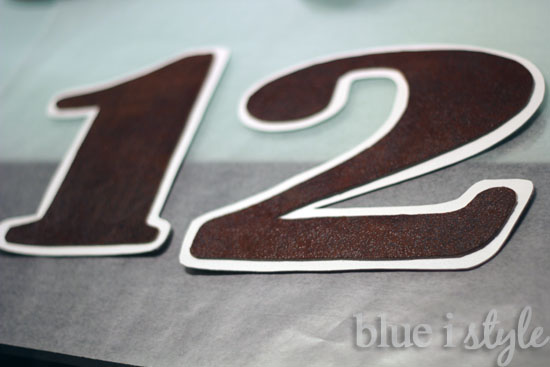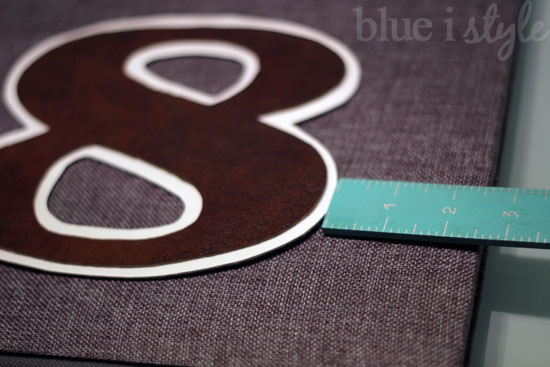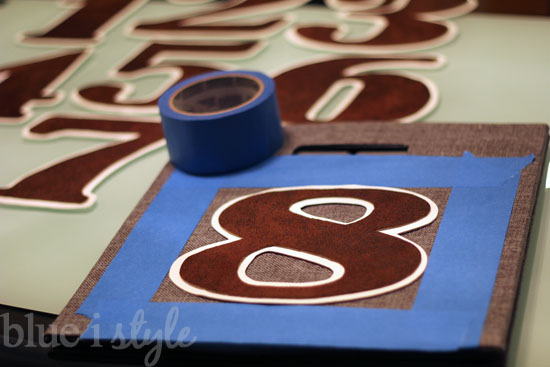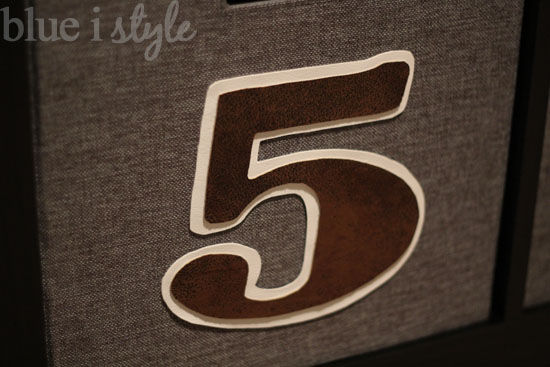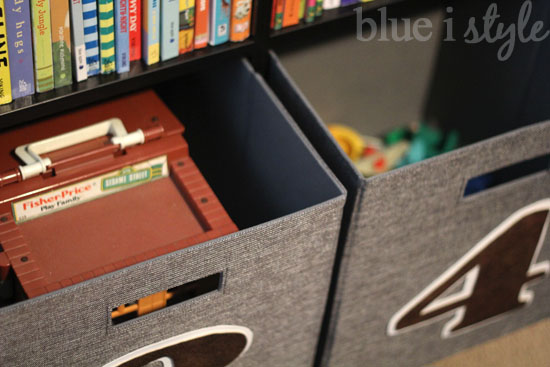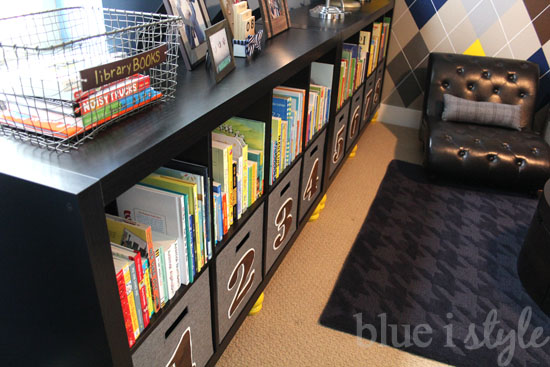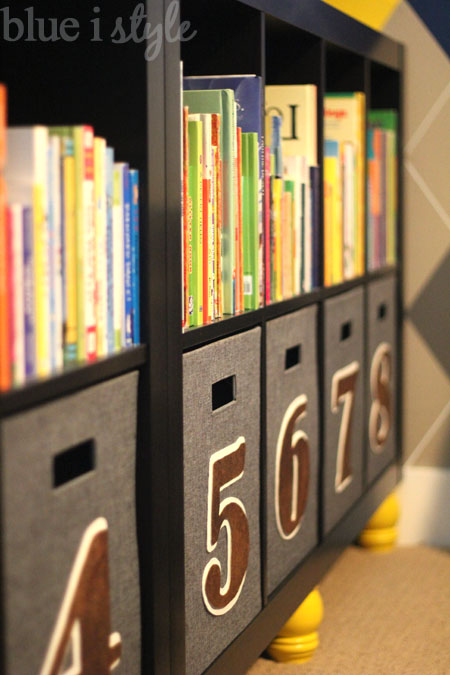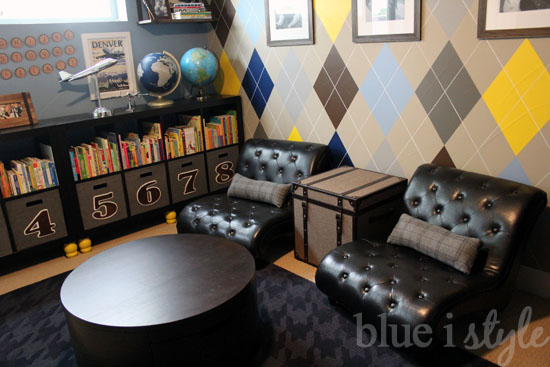Beckett is two and a half, and it is such a wonderful age! He is so curious and eager to learn new things, and he asks the best questions! He can sing the alphabet and counts really well, but he doesn’t yet recognize all of the letters and numbers, so it was important to me, in planning the design for his new room, to find a way to incorporate the alphabet and numbers to help him learn. To stay true to the vintage vibe of the room, I created typewriter key alphabet flashcards that hang above the bookshelves, and numbered toy storage bins that fit inside the bookshelves.
I originally had my eye on these Store By Number Cube Bins from the Land of Nod, but once I purchased the Expedit book shelves from Ikea, I realized the the cube openings were quite a bit larger than the Land of Nod bins. I was concerned that the smaller-sized bins would look odd in the larger Expedit openings, in addition to the fact they they wouldn’t maximize the available storage space.
Since the Land of Nod bins were just a little too small for what I needed, I decided to DIY my own {I know, no surprise there, right?!}. Of course, the first challenge was to find bins just the right size for the cubical openings in the Expedit, and I found exactly what I was looking for in the Threshold Storage Bins at Target.
Now, let’s be clear, this wasn’t a knock-off or high-low project for me. The listed price for the Threshold bins is exactly the same amount as the original numbered bins from the Land of Nod. While I did get the Target bins on sale, when you add in the cost of the additional materials, it was a break even. So this post isn’t about how I saved money {although I wish it were}, it’s just about how I was able recreate the look of the numbered bins in a size that better fit my needs. That’s not to say that you couldn’t save some money making your owned numbered bins. Depending on the color and size of bins you are after, it’s likely that you could find less expensive bins to add your numbers to.
I considered a lot of different ways to replicate the look of the Land of Nod numbered bins. Probably the easiest would have been to stencil the numbers on using fabric paint, but because of the texture of these bins, I didn’t think paint would give me a crisp, clean look. I also considered making my own iron on transfers, but again, because of the texture of the bins, I wasn’t sure how well this would work.
Then my mom suggested I use some of the white vinyl fabric she had left over from a recent project, and she recommended a permanent fabric glue that she’d used with great success in the past. I would have been happy with plain white numbers, but then my mom also showed me some really unique brown fabric that appears to have the texture of a football, but is soft with a bit of a squishy foam backing.
The leathery texture of the brown fabric was perfect for the masculine feel of the room, and I decided to use the white vinyl to border the brown in order to help tie in the white baseboards in the room, as well as the white lines in the argyle feature wall. Of course, the colors I chose were a matter of personal preference, but the important thing to note is that neither of these fabrics fray, making them perfect for this project!
Alright, so on to the tutorial! The first step was to determine the size of numbers I wanted for the bins, and to create patterns for cutting out the fabric. I measured and estimated that I wanted each number to be approximately 7 inches tall. I used Photoshop {although you could use Word or any other word processing program} and picked a font {Bernard MT Condensed} and a font size {575 pt}.
Since I had decided to layer the brown and white fabrics, I was going to need the number template in two different sizes. However, it wouldn’t work to simply use different font sizes because a change in font size is not a proportional change. What I needed was a border of the same width all the way around each number, and the easiest way to do this is to add a “stroke” element. Using Photoshop, stroke is an option under the “Layer Style” menu.
To ensure that the “stroke” border would show up well on my templates, I chose red to contrast against the blue numbers, and then adjusted the stroke size until I achieved the look I wanted {I ended up with a stroke size of 75 px}. Here, the blue represents what will be the brown fabric, and the red represents what will be the white vinyl border.
Once I had added the stroke to the numbers, I printed out a number and laid the paper on top of the bin to ensure that the scale was appropriate.
I was happy with the scale, so I continued to print out the rest of the numbers, and then began cutting out the numbers around the edge of the red border.
After all of the numbers were cut out, I laid them upside down and reverse traced them onto the back of the white vinyl fabric.
I then reverse traced the blue numbers on to the back of the brown fabric.
One by one, I affixed the brown numbers to the white numbers, being careful to center each as closely as possible.
I then used blue painters tape to tape around each number, marking off the exact placement. I then spread the glue on the back of the numbers, one by one, and placed them onto the bins using the blue tape as my guide for perfect positioning.
All that was left to do was remove the blue tape and admire my completed bins.
I think that the brown numbers with the white border on the grey bins are the perfect combination to compliment the colors and style of the room.
The links below include all of the other projects that went into the creation of the Vintage Preppy Little Gentleman’s Lounge:
